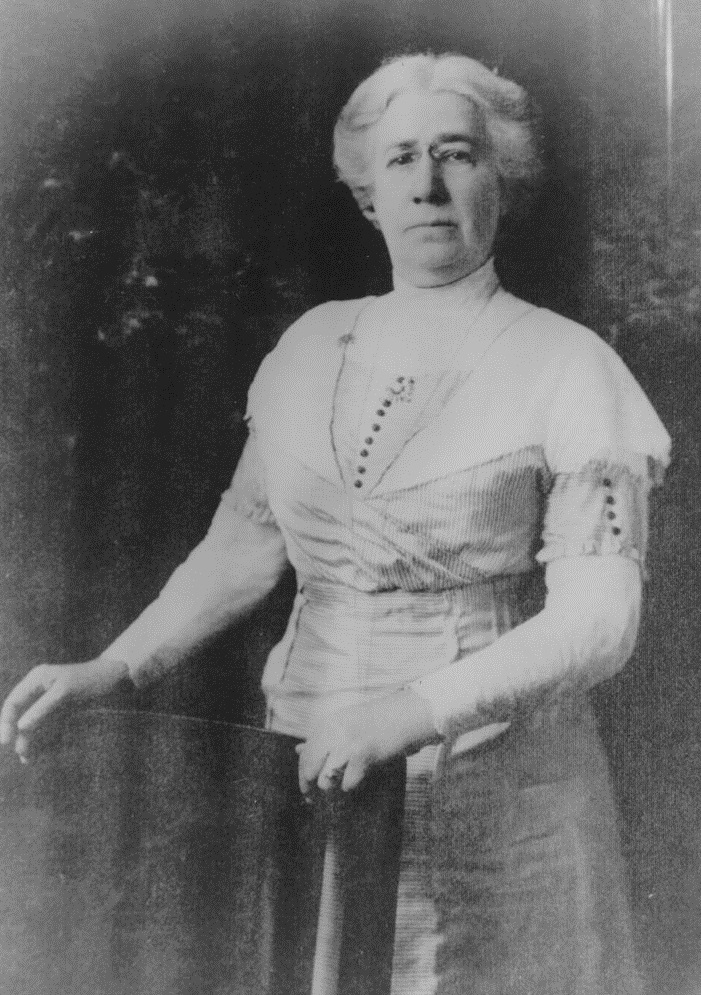Annie Chambers
- Date of Birth: 1842
- Place of Birth: Lexington, Kentucky
- Claim to Fame: brothel owner, boarding house owner
- Also Known As: Leannah Loveall (birth name), Leanna Kearns (legal name)
- Date of Death: March 24, 1935
- Final Resting Place: Elmwood Cemetery, Kansas City, Missouri
On March 24, 1935, Annie Chambers, a former prostitute and Kansas City brothel owner, passed away at the age of 92. By the time of her death, Chambers's own life had roughly paralleled Kansas City's untamed years of the late 19th century, which were followed by extensive modernization and reform efforts in the early 20th century.
Born near Lexington, Kentucky, in 1842, her name was Leannah Loveall. The young Loveall encountered her first major tragedy when she estranged herself from her pro-Confederate father by participating in a parade honoring Abraham Lincoln. Shortly thereafter, she became a school teacher and married an older man named William Chambers. Unfortunately, the couple lost their first child, and then she unexpectedly entered a coma while she was expecting a second child. When Chambers awoke several months later, she learned that her husband had died in a horse and buggy accident. Magnifying these tragedies still further, her second pregnancy ended in stillbirth.

Distraught with grief, Leannah Chambers followed an acquaintance to Indianapolis and turned to a life of prostitution working under the name Annie Chambers. There she suffered raids by the Indianapolis police and fell into even deeper despair when her engagement to a former client ended with the discovery that the client was already married. After receiving advice from an acquaintance, Annie Chambers resolved to move to Kansas City, where she hoped that her trade would be better tolerated.
Kansas City proved to be the perfect home for Annie Chambers. In the 1870s the city's railroad hubs drew a diverse collection of businessmen, missionaries, railroad workers, cattlemen, and westward migrants. Young, unmarried men largely outnumbered women and frequented the 80 saloons and 40 houses of prostitution that catered to the bustling population of 50,000. The city, so hastily assembled in the midst of a population boom over the previous decade, even lacked a formal police force until 1874.
For her part, Chambers demonstrated substantial business skills in the thriving city. She arrived in 1870 and opened a small brothel north of the Missouri River. Within two years she acquired the resources to open an opulent 25-room mansion in the red-light district south of the river, in the City Market area. Operating within two blocks of City Hall, and later, Police Headquarters, the business quickly accumulated fame and made Chambers quite wealthy. A steady stream of bribes and fines protected Chambers' place from police interference.
Chambers reportedly took much pride in her work, as she believed that she provided a future for the destitute young women who came to work in her establishment. In her later years, she explained that many of the "thousands" of women who worked there found husbands and moved on to nobler pursuits of family life. While other local establishments charged as little as 25 cents for their services, her luxuriously appointed "resort," as she called it, charged up to $10, half of which the prostitutes kept. This could lead to incomes of $100 per week, a substantial sum for the time.
Despite holding an enduring pride in her work, Chambers did eventually reform later in life. She struggled to keep her business open after the maturing Kansas City attempted to clean up the red-light district starting in 1913. Nonetheless, Chambers finally relented in 1923 when the Reverend David B. Bulkley and his wife, Beulah Bulkley, inspired her to become a Christian.
Ironically, Chambers spent the remaining decade of her life lecturing about the evils of sin while running her mansion as a legitimate boarding house. She never publicly denounced her own past, but now she helped young women in more socially acceptable ways. After Chambers's death in 1935, the Bulkleys inherited the mansion and used it as part of their City Union Mission next door. After serving for nearly 75 years as a house of sin and then as a house of god, the mansion was finally razed in 1946.
This article has been adapted from an article published at KChistory.org.
This work is licensed under a Creative Commons Attribution-NonCommercial-NoDerivatives 4.0 International License.
